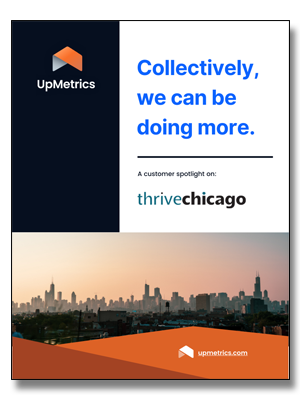How to Use Key Impact Indicators (KIIs) to Drive your Impact Measurement Strategy
In today's global business landscape, organizations are increasingly striving to demonstrate their social and environmental impact. Impact measurement has thus become a critical component of corporate social responsibility. However, given the wide range of activities that organizations undertake, measuring impact effectively can be challenging. One useful way to address this challenge is by setting Key Impact Indicators (KIIs) which enable organizations to measure their impact in a focused and structured manner.
What are Key Impact Indicators?
Key Impact Indicators (KIIs) are defined as 'metrics used to assess the impact of an organization's activities on its stakeholders'. These indicators, which can be quantitative or qualitative, provide information about the value of an organization's activities in terms of their contribution to specific social or environmental objectives.
There are many different types of KIIs that organizations can use to measure their impact. For example, a non-profit organization may use KIIs to measure the number of people it has helped or the amount of money it has raised for a particular cause. In contrast, a for-profit organization may use KIIs to measure its financial performance or customer satisfaction levels.
In addition to improving stakeholder relationships, KIIs can also help organizations to identify areas for improvement and make data-driven decisions. By regularly monitoring and analyzing KIIs, organizations can identify trends and patterns in their data and make adjustments to their activities and strategies accordingly.
Steps to Identify and Set Key Impact Indicators Using UpMetrics’ Impact Framework
So, how does one set KIIs for their organization? It all starts with an impact framework. An impact framework is a structured approach that supports organizations as they develop and operationalize their impact - helping teams identify, measure, and communicate their social or environmental impact. The end goal of an impact framework is to have custom Key Impact Indicators directly aligned with an organization’s impact themes.
At UpMetrics, we’ve developed an Impact Framework Methodology that involves helping organizations develop a strategic and effective Impact Framework. In alignment with your Vision, Mission, Values, and Impact Themes, for each impact theme we help you define 2 levels of measurement - performance and community contribution. (Take a look at our Impact Framework Methodology page for more information.)
Setting targets and benchmarks
After selecting your Key Impact indicators, it is essential to set targets and benchmarks that will enable you to measure your progress towards your objectives effectively. Targets should be ambitious, yet achievable within a specific timeframe.
For instance, if your KII is to increase the number of children attending after-school programs, you might set a target of a 10% increase in attendance within the next six months. By setting targets and benchmarks, you can track your progress towards your goals and make adjustments as necessary.
Establishing a monitoring and reporting system
The final step is to establish a monitoring and reporting system that will enable you to track your progress towards your objectives. This system should be integrated into your existing monitoring and evaluation processes to ensure that it is effective and sustainable.
Your monitoring and reporting system should include regular reporting on your KIIs, including progress towards targets and benchmarks. You should also consider using data visualization tools to make it easier to understand and communicate your progress towards your objectives.
Setting KIIs is a valuable way of measuring impact and demonstrating the value of an organization's activities to stakeholders. By following the steps outlined in this article, organizations can identify and set KIIs that will enable them to measure progress towards their objectives effectively. This approach can also lead to improved decision-making, enhanced communication and transparency, increased efficiency and effectiveness, better alignment with organizational goals, and increased stakeholder engagement.

July 5, 2023
